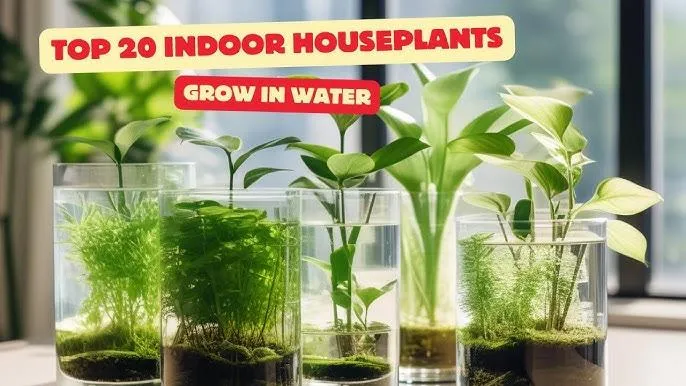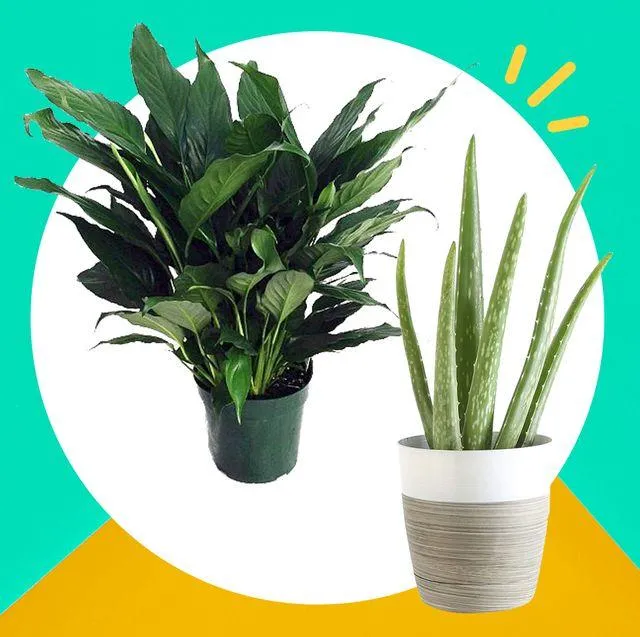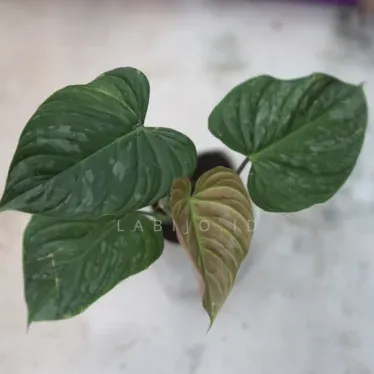The Basics of Indoor Plants – A Comprehensive Guide for Beginners
If you’re looking to add some life and greenery to your home, indoor plants are a great natural way to do so. However, keeping plants alive inside can seem tricky if you’ve never tried it before. From choosing the right types of plants to figuring out watering and light needs, there are a lot of factors to consider. In this article, I’ll break down everything you need to know to successfully care for indoor plants as a beginner.
Choosing Plants Suited for Indoor Conditions
When starting your indoor plant collection, it’s important to select plants that will thrive in the environment inside your home. Not all plants adapted to thrive outdoors can handle lower light levels and drier indoor air. Here are some of the best types of plants for beginners:
- Pothos – One of the hardest plants to kill, pothos is extremely low maintenance and tolerates low light. It comes in variegated or solid green varieties.
- Snake plant – With tall stripes of gray-green foliage, snake plants filter toxins from the air and are drought tolerant. They can survive weeks without water.
- ZZ plant – Thick, waxy leaves make the ZZ plant surprisingly resilient. It grows well in low or medium light and stays hydrated for long periods.
- Peace lily – An attractive plant with white blooms, peace lilies indicate thirst by drooping leaves. Water when the soil is dry and leaves perk back up quickly.
- Philodendron – Vining philodendrons like heartleaf or brasil add greenery without taking up much space. They thrive in medium or low indirect light.
Assessing Light Conditions
The amount and quality of light in your home will determine which plants can tolerate it. In general, southern and western windows provide the brightest natural light. But even eastern windows supply enough light for low-light plants. Use a light meter app on your phone to evaluate specific spots. And be prepared to rotate plant positions every few months if they start to lean towardslight sources.
Plants labeled “low light” can survive inindirect sunlight a few feet from a window. “Medium light” plants like brighterconditions one to two feet from the glass. And “high light” plants require directsunlight right in a bright window.

Watering Your Green Roommates
Underwatering is usually more common than overwatering for indoor plants. The easiest way to water is by checking the top inch or two of soil. If it’s dry, it’s time to water thoroughly until excess runs out the drainage holes. Then empty the catch tray below to allow the soil to dry out partially before next watering.
As a general rule, most indoor plants prefer soils to dry slightly between waterings. Some signs that it’s time to water include drooping or wilted foliage, pot feels light when lifted, or topsoil appears completely dry. But be careful not to over-saturate the soil if using a moisture meter or your finger test shows remaining moisture below.
Differing plant needs mean some like snake plants may only require water every 2-4 weeks, while peace lilies or pothos prefer weekly watering. Err on the side of less frequent watering for plants in low-light conditions too, as their growth will be slower overall.
Adding Difficulty with Fussy Plants
Once you’ve successfully kept some beginner-friendly plants alive, you may want to challenge yourself with some slightly more high-maintenance types. Here are a few options to consider after gaining more experience:

- Orchids – With proper light, humidity, soil and watering techniques, orchids can bloom for years. But they’re prone to root rot if overwatered.
- Calatheas – Known for their ornate foliage patterns, calatheas demand high humidity levels to avoid crispy brown edges. Try a pebble tray under the pot.
- Fiddle-leaf fig – Imposing trees with large glossy leaves, these dramatic plants demand bright light and prefer drier soil between waterings.
- Monstera – Its split leaf fenestrations make monstera deliciosa iconic. But they require adjustment to higher light if newly transitioned indoors.
Going slowly with easier plants first allows you to hone your skills and prevent discouragement from dead or suffering greenery. With success, your indoor jungle can continue expanding to include more challenging beauties too.
Providing the Basics: Potting Mix, Fertilizer & Repotting
Most indoor plants thrive when potted in well-draining soils formulated for houseplants. Look for potting mixes containing compost, perlite or vermiculite for aeration. Check the moisture needs of your specific plants, as some prefer slightly moister mixes than others.
Feeding houseplants every few months during the growing season provides essential nutrients. Go with a dilute water-soluble or slow-release fertilizer suitable for indoor use. And repot plants that become pot-bound into a container just 1-2 inches larger to allow for ongoing root growth.
Signs a plant needs repotting include roots circling the drainage holes, tightly packed soil, and lack of growth. Gently remove from the current pot and brush or wash soil from the roots before replanting in fresh potting mix. The process feels intimidating but gets easier with practice.

Armed with the basics of lighting, watering, soil and fertilizer; you’ll be well equipped to keep your new leafy friends thriving for many years to come. Now get out there and start growing your own beautiful indoor plant jungle! Let me know if you have any other questions.
Dealing with Pests and Problems
No matter how careful you are, it’s possible for pests to eventually infiltrate your plant collection. The most common culprits are spider mites, scale, mealybugs and fungus gnats. Regularly checking leaves and stems allows for early detection before major infestations set in.
For mild issues, try spot-treating with neem oil or insecticidal soaps. But persistent pests may require removing infected plants or using stronger pesticides as a last resort. Underwatered plants also fall prey to gnats and persistent fungi. It pays to identify warning signs your plants display to address issues proactively.
Yellowing or browning leaf spots could indicate overwatering, underwatering or nutrient deficiencies too. Diagnosing the actual cause and adjusting care accordingly helps get your plants healthy again. Don’t lose hope – with some TLC, most common problems can be overcome.

Factors to Consider When Choosing an Indoor Plant
| Plant Type | Light Needs | Water Needs | Care Level |
|---|---|---|---|
| Pothos | Low | Let soil dry between waterings | Low |
| Spider Plant | Low to Medium | Let soil partially dry between waterings | Low |
| Snake Plant | Low | Let soil dry completely before watering | Very Low |
| Chinese Evergreen | Medium | Let top inch of soil dry before watering | Low |
| ZZ Plant | Low | Let soil dry completely before watering | Low |
FAQ
- What type of indoor plants do best in low light conditions?
Plants like pothos, snake plant and Chinese evergreen basically thrive with not very much light. They can stay healthy in rooms that get mostly indirect sunlight throughout the day. - How often should indoor plants be watered?
It varies a lot depending on the plant but as a general rule, indoor plants needs water whenever the soil dries out. Stick your finger about an inch into the soil, and if it’s dry, it’s time to water. Many plants only need water around once a week. - What kinds of indoor plants are non-toxic for pets and kids?
Peace lilies, ZZ plants, and snakes plants are all pretty pet-safe as far as indoor plants go. They won’t poison animals if they decide to snack on a leaf. Always keep an eye on little kids and pets around any plants though, just to be safe. - Do indoor plants improve air quality?
Studies show that some common houseplants are effective at removing chemicals like formaldehyde, benzene, and trichloroethylene from the air. Plants like Peace Lily, English Ivy, and Gerbera Daisy can help filter the air and make it healthier to breathe, or so the experts say. - How can I get my plant to flower indoors?
Plants like poinsettia, azalea and amaryllis need certain triggers to bloom, like adjusting the photoperiod or decreasing temperatures. But kind of by luck of the draw, other plants will sometimes sprout flowers without any special care. No harm in giving them a shot though! - What should I do if my indoor plant isn’t doing well?
If a plant appears droopy or the leaves start turning yellow, it may need more sun, water, fertilizer or someone to talk to, I mean check the roots! Pests are another possibility. Diagnose what could be causing the trouble and take action – pruning, repotting, or something more drastic. With TLC many sickly plants can bounce back. - Are succulents and cacti good for beginners?
Succulents and cacti have a sort of reputation for being “low maintenance.” But the truth is, a healthy succulent still needs the right conditions – well-draining soil, adequate light, water only when dry. Beginners have kind of killed more than a few succulents through overwatering. With care and patience, they could work. But peperomias are perhaps the easiest plants for novices.
Additional Tips
Indoor plants not only spruce up a room but studies show houseplants may lower stress levels and boost concentration too. However, overwatering is one of the most common mistakes for new plant parents. Despite the advertisements, no plant thrives on neglect. The key is learning each plant’s needs and meeting them consistently, not excessively. Still, with small adjustments, even black thumbs can keep greenery happy indoors! Do indoor plants spark joy in your space?
